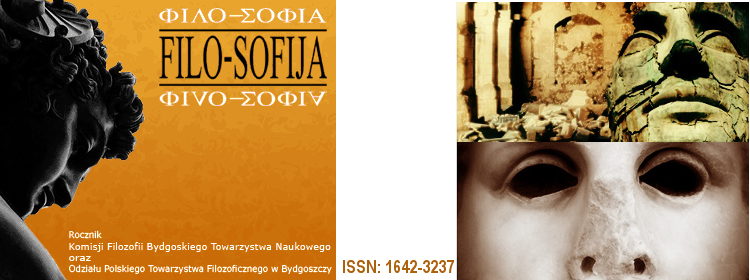WzniosŇāoŇõńá w XVII w. na przykŇāadzie refleksji o sztuce we Francji ‚ÄĒ Nicolasa Boileait-Despreaux recepcja traktatu Pseudo-Longinosa Peri hypsous
Abstract
THE SUBLIME IN THE 17TH-CENTURY FRENCH REFLECTION ON ART‚ÄĒN. BOILEAU-DESPREAUX‚ÄôS RECEPTION OF LONGINUS‚Äô PERI HYPSOUS
There are three basic texts on the sublime: Longinus’ Peri hypsous, Edmund Burke’s Philosophical Enquiry into the Origins of our Ideas of the Sublime and Beautiful and Immanuel Kant’s Critique of Judgment. The work of the ancient author is the most essential on this subject; it elaborates the theoretical rules of rhetoric. Because of qualitative similarity of the beautiful and the sublime, the latter was for a very long time considered a sort of beauty. Both modern texts discuss the beautiful and the sublime as opposite categories; that is new and announces romanticism with some changes in the aesthetic paradigm. The work of the seventeenth-century art theoretician, Nicolas Boileau-Despreaux, was a turning point in understanding the old category of the sublime. His French translation of the ancient treatise and his study of the seventeenth-century sublime are landmarks in modern recognition of the importance of this aesthetic idea. Boileau worked on a general theory that could be applied to various arts. That indicates a special concern for the sublime as a category that can cope with the challenge of modern art without losing the value of ancient art.
Keywords: NICOLAS BOILEAU-DESPREAUX, LONGINUS, PERI HYPSOUS, THE SUBLIME
There are three basic texts on the sublime: Longinus’ Peri hypsous, Edmund Burke’s Philosophical Enquiry into the Origins of our Ideas of the Sublime and Beautiful and Immanuel Kant’s Critique of Judgment. The work of the ancient author is the most essential on this subject; it elaborates the theoretical rules of rhetoric. Because of qualitative similarity of the beautiful and the sublime, the latter was for a very long time considered a sort of beauty. Both modern texts discuss the beautiful and the sublime as opposite categories; that is new and announces romanticism with some changes in the aesthetic paradigm. The work of the seventeenth-century art theoretician, Nicolas Boileau-Despreaux, was a turning point in understanding the old category of the sublime. His French translation of the ancient treatise and his study of the seventeenth-century sublime are landmarks in modern recognition of the importance of this aesthetic idea. Boileau worked on a general theory that could be applied to various arts. That indicates a special concern for the sublime as a category that can cope with the challenge of modern art without losing the value of ancient art.
Keywords: NICOLAS BOILEAU-DESPREAUX, LONGINUS, PERI HYPSOUS, THE SUBLIME
PeŇāny tekst:
PDFAdministracja Cytowania | Strony czasopism
